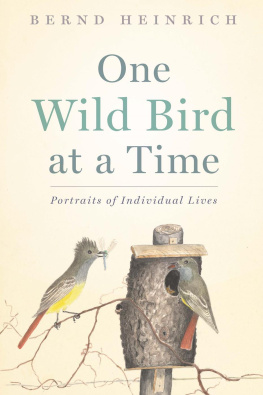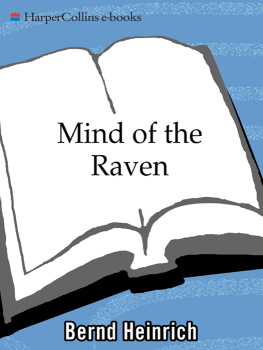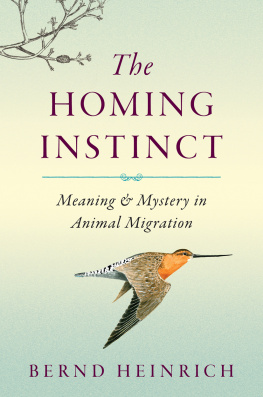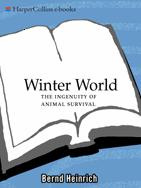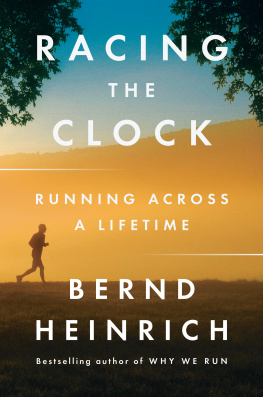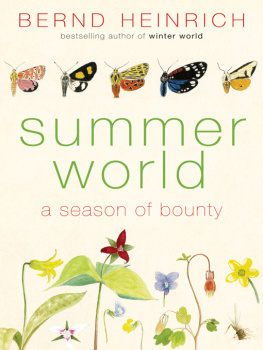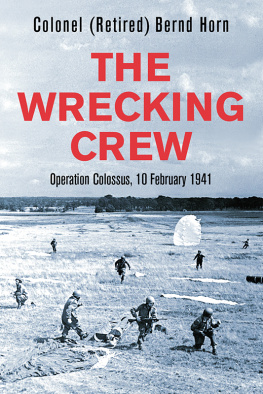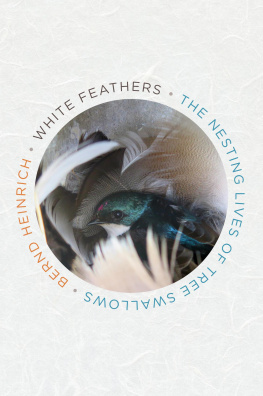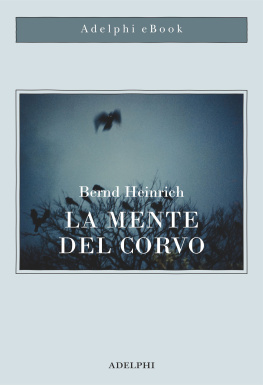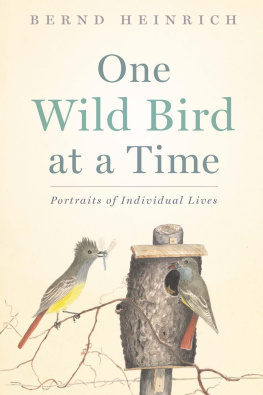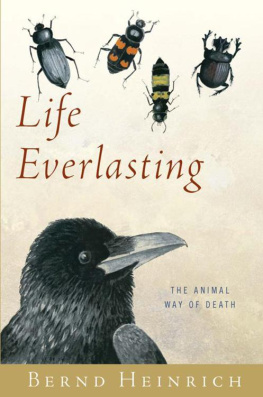Bernd Heinrich - A Naturalist at Large: The Best Essays of Bernd Heinrich
Here you can read online Bernd Heinrich - A Naturalist at Large: The Best Essays of Bernd Heinrich full text of the book (entire story) in english for free. Download pdf and epub, get meaning, cover and reviews about this ebook. publisher: Houghton Mifflin Harcourt, genre: Detective and thriller. Description of the work, (preface) as well as reviews are available. Best literature library LitArk.com created for fans of good reading and offers a wide selection of genres:
Romance novel
Science fiction
Adventure
Detective
Science
History
Home and family
Prose
Art
Politics
Computer
Non-fiction
Religion
Business
Children
Humor
Choose a favorite category and find really read worthwhile books. Enjoy immersion in the world of imagination, feel the emotions of the characters or learn something new for yourself, make an fascinating discovery.
- Book:A Naturalist at Large: The Best Essays of Bernd Heinrich
- Author:
- Publisher:Houghton Mifflin Harcourt
- Genre:
- Rating:3 / 5
- Favourites:Add to favourites
- Your mark:
- 60
- 1
- 2
- 3
- 4
- 5
A Naturalist at Large: The Best Essays of Bernd Heinrich: summary, description and annotation
We offer to read an annotation, description, summary or preface (depends on what the author of the book "A Naturalist at Large: The Best Essays of Bernd Heinrich" wrote himself). If you haven't found the necessary information about the book — write in the comments, we will try to find it.
A Naturalist at Large: The Best Essays of Bernd Heinrich — read online for free the complete book (whole text) full work
Below is the text of the book, divided by pages. System saving the place of the last page read, allows you to conveniently read the book "A Naturalist at Large: The Best Essays of Bernd Heinrich" online for free, without having to search again every time where you left off. Put a bookmark, and you can go to the page where you finished reading at any time.
Font size:
Interval:
Bookmark:
Copyright 2018 by Bernd Heinrich
Illustrations Bernd Heinrich
All rights reserved
For information about permission to reproduce selections from this book, write to or to Permissions, Houghton Mifflin Harcourt Publishing Company, 3 Park Avenue, 19th Floor, New York, New York 10016.
hmhco.com
Library of Congress Cataloging-in-Publication Data is available.
ISBN 978-0-544-98683-1
Cover design by Martha Kennedy
Cover illustrations by Bernd Heinrich
Author photograph Kyle Isherwood
e ISBN 978-0-544-98687-9
v1.0418
The following essays have appeared elsewhere in slightly different form:Natural History: Life in the Soil, Rock-Solid Foundation, The Spreading Chestnut Tree, When the Bough Bends, O Tannenbaum, Reading Tree Leaves, Hot- and Cold-Blooded Moths (under the title False Assumptions: A Matter of Degrees), Woolly and Wondrous, Winter Guests, Arctic Bumblebees (under the title The Antifreeze of Bees), Beating the Heat, and Killing with Heat, Beetles and Blooms (under the title Bedouins, Blooms, and Beetles), Cooperative Undertaking: Teaming with Mites, Whirligig Beetles: Quick Paddlers, A Birdbrain Nevermore, Phoebe Diary, Conversation with a Sapsucker, Kinglets Realm of Cold, The Diabolical Nightjar, Hidden Sweets, Cohabiting with Elephants: A Browsing Relationship, The Hunt: A Matter of Perspective, Synchronicity: Amplifying the Signal, Curious Yellow: A Foray into Iris Behavior, Twists and Turns, Birds, Bees, and Beauty: Adaptive Aesthetics. Audubon: Ravens on my Mind, Birds Coloring Their Eggs (under the title Why Is a Robins Egg Blue?). Orion: Ravens and the Inaccessible. Outside: Hawk Watching, Endurance Predator. New York Times: Hibernation, Insulation, and Caffeination, What Bees and Flowers Know. Field Notes: Seeing the Light in the Forest.
I dedicate this book to Professor James R. Cook, my academic adviser at the University of Maine, research associate, and dear friend, who inspired me and steered me onto the path to science
Natural historians make observations that prompt questions, whose answers lead to an understanding of life in its various dimensions. In this collection of natural history essays, I hope to provide a general audience with examples of the links between such observations and the science of biology. My chosen topics are derived from common observations of nature. I wanted to highlight some of the stories that I have found most exciting through the years and had published in Natural History magazine and other venues. Some are the result of decades-long studies, while others were instigated by anecdotes that inspired shorter periods of curiosity. In winnowing through essays to include in this volume, I exercised a bias in selecting a variety of subjects that depict the interconnectedness of all of life, and their relation to our individual human lives.
It seems to me that the process of understanding nature at large has become increasingly difficult. To study it in depth and scientifically may require specialization, which can at the same time remove us from the world we experience, making investigations and conclusions abstract. My hope, however, is that these essays will stimulate and encourage participation and the desire to experience nature not only through science but also through direct contact.
I am fortunate to have had unique opportunities for extensive and intimate contact with the natural world as well as scientific grounding. This combination was made possible by the enthusiastic predecessors who provided me with experience and inspiration: rich soil to grow on.
My father, Gerd, made me go out with him to hunt ichneumon wasps and trap mice, and at age six gave me instructions on how to properly pin beetles for a scientific collection. My mother, Hildegarde, taught me how to skin and stuff small birds and mammals for museum specimens, and how to dry and preserve plants. Rolf Grantsau showed me how to make and use a slingshot and introduced me to a paintbrush. Floyd Adams told me about the woodpecker (the flicker) that feeds on the ground and the songbird that flies like a quail (the meadowlark). His wife, Leona, was upset when I shot a hummingbird with my slingshot in her blueberry patch in bloom in the yard. Floyd took me along with his kids to go bee-lining, raccoon hunting, and white perch fishing at night on Pease Pond. Phil Potter taught me how to use a .3030 Winchester rifle and how to handle a canoe, fly rod, ax, pitchfork, and hoe. I thank Dick Cook for giving me confidence and joy in doing meaningful experiments suitable for publication in technical journals. George Bartholomew helped me consider every word in writing up scientific results. I remember all these people fondly and appreciate them still, for they all live on in spirit, having helped create the work presented here.
I thank my agent, Sandy Dijkstra, whose upbeat nudging instigated and then encouraged me to write another book in the first place. My editor, Deanne Urmy of Houghton Mifflin Harcourt, was always figuratively looking over my shoulder to see the larger picture, and I appreciate Susanna Broughams careful eye in spotting the inconsistencies, though all errors that remain are strictly my own. Lisa Glover graciously coordinated this books production. Lastly and mostly, Im grateful to Lynn Jennings for her patience during my prolonged time spent at the writing desk, her deciphering of my script and typing, and her active support as a sounding board for ideas. The Maine woods have not been the same since she arrived, and they never will be. Craig Neff and Pamelia Markwood, of the Naturalists Notebook of Seal Harbor, Maine, archived my illustrations so that I could make them available here.
Think you that the rounded rock marked with parallel scratches calls up as much poetry in an ignorant mind as in the mind of a geologist, who knows that over this rock a glacier slid a million years ago? The truth is, that those who have never entered upon scientific pursuits know not a tithe of the poetry by which they are surroundedwhoever has not in youth collected plants and insects, knows not half the halo of interest which lanes and hedgerows can assume.
Herbert Spencer, English biologist, 18201903

Natural History, November 2014
Papa, Mamusha, my sister Marianne, and I were for six years quartered in a one-room hut in a dark forest in northern Germany right after World War II. Towering pines, spruce, and beech shaded the ground except for a small sloping patch in front of the cabin. Light snow had recently covered the ground, and now, after a warm spring rain, it had become black, and that made me notice something marvelous by our doorstep. From one day to the next, I saw a small patch on the dirt turning a luminous green. Perhaps the next day or so after that, the patch had expanded over the black ground: I was mesmerized by this verdant, magically spreading circle of grass blades.
This was, as far as I can remember, my earliest moment of wonder. Had grass been underfoot before, I would have hardly noticed it, from seeing it all the time. But watching that single patch expand from one day to the next was a moment of magic and mystery, maybe even of ecstasy, forever stamped into my memory.
Even so, for a long time the dirt the grass had spawned from remained for me merely something crumbly under the soles of my feet and between my toes. It was the sand on a mile or so of the wooded road between our hut and the village school. Shiny green beetles flashed in front of me on my walks, and after a brief zigzagging flight, where they glinted like jewels in the sun, they landed a few yards ahead. We called them sand beetles, and later I knew them as tiger beetles. Although I couldnt fly, I could run, and it felt good to be on par with such gorgeous company.
Font size:
Interval:
Bookmark:
Similar books «A Naturalist at Large: The Best Essays of Bernd Heinrich»
Look at similar books to A Naturalist at Large: The Best Essays of Bernd Heinrich. We have selected literature similar in name and meaning in the hope of providing readers with more options to find new, interesting, not yet read works.
Discussion, reviews of the book A Naturalist at Large: The Best Essays of Bernd Heinrich and just readers' own opinions. Leave your comments, write what you think about the work, its meaning or the main characters. Specify what exactly you liked and what you didn't like, and why you think so.

